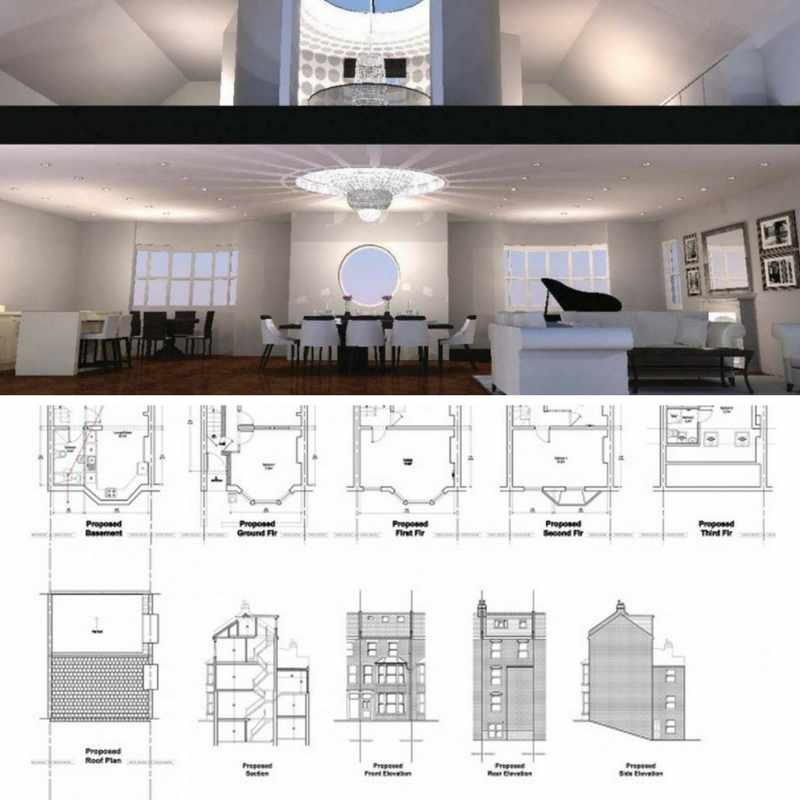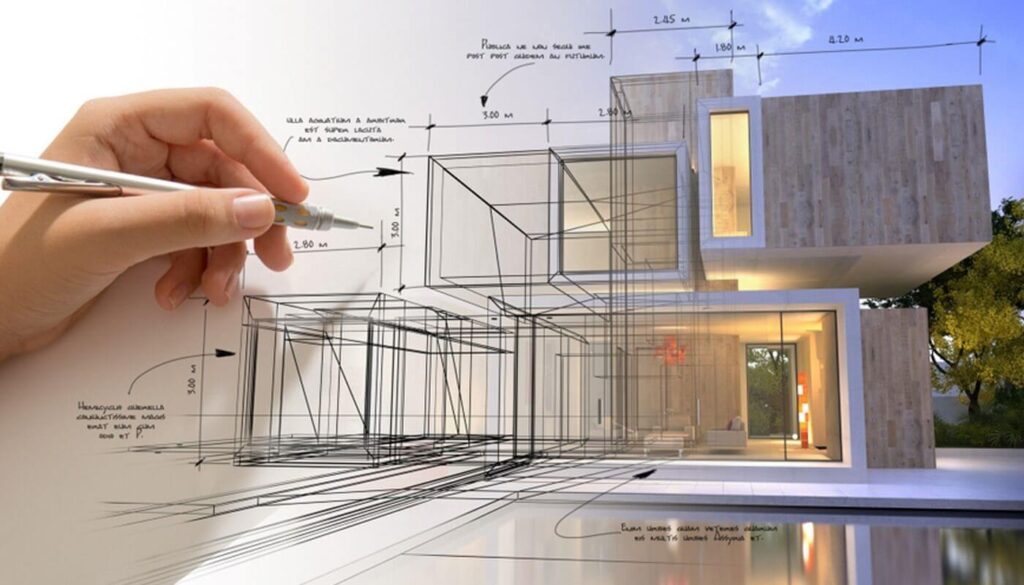Work with a Luxury Home Architect to Build a Timeless Masterpiece
Work with a Luxury Home Architect to Build a Timeless Masterpiece
Blog Article
Making The Most Of Visual Allure: The Harmony Between Interior Design and Home Engineer Methods
Understanding the subtle interplay in between interior decoration and home style can significantly boost the visual appeal of a home. This marriage of layout self-controls includes a thoughtful integration of building elements with indoor formats, and a proficient application of concepts such as contrast, rhythm, and equilibrium. As we explore this synergy, we will certainly discover means to produce functional and visually striking atmospheres that not just show individual style, yet additionally adapt to the dynamic demands of contemporary living.
Recognizing the Essentials: Defining Interior Design and Home Design
Interior decoration and home design, typically linked, represent the visual and structural elements of our living spaces. Interior Design is a multifaceted discipline that includes developing functional, risk-free, and aesthetically pleasing rooms inside a building. It consists of components such as furniture plan, shade control, and accessory selection. On the various other hand, home architecture largely concentrates on the strong structure of a structure. It includes creating a practical and aesthetically pleasing structure that stands the test of time. It incorporates components such as space sustainability, planning, and construction. Both fields call for a deep understanding of human actions, culture, and psychology. Each plays an essential role in shaping our living environments, adding to our general convenience, performance, and wellness.
The Harmony Explained: Exactly How Interior Design and Home Design Intersect
Understanding the harmony in between interior decoration and home architecture can unlock a globe of imagination and performance. When reviewing this crossway, the influence of style on interiors is an essential aspect to take into consideration. This discussion will concentrate on the unifying design concepts that mix these two areas into an unified whole
Unifying Style Principles
While it might seem that interior design and home architecture are 2 distinct disciplines, they are really deeply interconnected, developing a harmony that is vital for producing unified living rooms. Unifying layout concepts are the pillars that facilitate this symbiosis. In essence, these principles serve as the bridge, unifying indoor style and building methods.
Building Influence on Insides
When one thinks about the building influence on insides,The intertwining of interior layout and architecture becomes also extra evident. Architectural components are innate to an area's performance and aesthetics, shaping the layout from the start. Columns, staircases, light beams or arcs, for instance, serve both decorative and structural objectives. They can separate rooms, produce prime focus or imbue a room with a specific ambiance. Consideration of structure, percentage, and light additionally come from architectural influences. Ultimately, design molds the canvas whereupon interior developers work. Their harmony is therefore obvious: style establishes the framework, which interior decoration boosts with appearance, decor, and shade. This symbiotic partnership guarantees an unified balance in between feature and appeal, maximizing the aesthetic charm of any space.
Secret Concepts in Integrating Interior Design and Home Architecture
Striking a balance between performance and aesthetics is a fundamental aspect of harmonizing interior decoration and home architecture. A similarly crucial principle is the combination of sustainable design to create environment-friendly and energy-efficient homes. Understanding and discovering different architectural styles can likewise play a crucial function in achieving an unified layout. Luxury home architect.

Stabilizing Functionality and Looks
Balancing performance and aesthetics in interior style and home architecture arises as one of the critical concepts to take into consideration. This fragile balance calls for a precise blend of usefulness and allure, intending to develop areas that are not just aesthetically pleasing but also serve their designated purpose efficiently. Looks boosts the state of mind and influences the assumption of space, whereas performance makes sure functionality and convenience. Trick to this balance is a thoughtful selection of elements such as structure, lights, and shade, which must complement each various other while offering their specific functions. Just as vital is the reliable plan of the area, with a well-planned layout contributing considerably to the synergy in between capability and appearances. This harmonious blend ultimately enhances the lifestyle for the owners.
Sustainable Design Assimilation
In preserving the equilibrium in between functionality and appearances, one have to additionally think about the assimilation of sustainable check this site out layout principles. This strategy not just enhances the visual allure of a space yet also guarantees its durability and lowered environmental effect. The key lies in selecting materials that are environment-friendly, resilient, and appealing. This includes natural, recycled, or low-impact products that add to a much healthier and much more lasting world. see post Designers and architects can likewise incorporate energy-efficient systems, such as photovoltaic panels or energy-saving home appliances. Moreover, making certain good interior air top quality through sufficient natural lights and ventilation is important. Therefore, an unified blend of indoor design and home architecture, directed by sustainability, can produce rooms that are stunning, useful, and eco-friendly.
Checking Out Architectural Designs
While there are a plethora of building designs to explore, it is vital to understand that every one brings its unique concepts that can dramatically affect the harmonization of interior design and home style. These styles, varying from the ornate Baroque to the minimalist Modernist, bring unique philosophies and looks that, when correctly comprehended and utilized, can develop homes that are not only visually magnificent yet also sympathetically integrated in regards to design and design. Picking a building design is not simply concerning personal visual choice; it is about selecting a style language that talks with the home owner's lifestyle, approach, and desires, developing a home that is a real representation of its homeowners.
Instance Studies: Outstanding Instances of Design and Design Harmony
Exploring some remarkable instance studies offers an extensive understanding of how layout and architecture can harmoniously combine to develop useful and engaging spaces. The renowned Fallingwater home, made by Frank Lloyd Wright, exquisitely demonstrates this harmony. Wright's layout masterfully incorporates your home with its bordering landscape, while the indoor mirrors the exterior's organic forms. One more instance is the minimalistic Tadao Ando's Church of Light in Japan. The engineer achieved an ideal balance in between simpleness and dramatization, utilizing raw concrete and light. Inside, the stark, minimal design creates a sense of peace and spiritual consideration. These examples illustrate the significance of synergy between indoor layout and style in accomplishing useful and visual success.
Practical Tips: Enhancing Your Home's Aesthetic Charm
Drawing inspiration from the study of architectural and layout harmony, house owners as well can execute her response some practical strategies to enhance their home's visual appeal. An unified mix of colors, appearances, and lights can boost a space, developing a warm and inviting ambience. Choosing furniture that matches the architectural components of your house can foster a feeling of unity. Wall surface art and style items can add personality, showing individual style and taste. Incorporating plant, either through interior plants or views to the outdoors, can bring a component of nature, providing a soothing effect. Creative use of mirrors can open a space, giving an impression of a larger location. Ultimately, the visual allure depends on stabilizing functionality with layout, creating a home that is both attractive and habitable.

Future Trends: Just How Modern Techniques Are Transforming Interior Design and Architecture
As the world progresses, so do the fads in indoor design and architecture. Modern methods are significantly concentrating on sustainability, incorporating energy-efficient styles and environmentally friendly materials. These fads mirror a shift towards layouts that are not just visually pleasing, yet likewise environmentally aware, technologically advanced, and adaptable to changing way of livings.
Conclusion
In conclusion, the integration of indoor design and home architecture techniques is a vibrant strategy to boosting visual appeal. By leveraging key concepts like contrast, rhythm, and equilibrium, and including elements of modern living, developers can develop flexible, visually pleasing settings. With comprehending this synergy, property owners can make informed choices that not only boost their living areas but additionally contribute to their overall health.
Comprehending the refined interplay between indoor style and home architecture can significantly raise the aesthetic charm of a living space.Interior layout and home design, frequently linked, represent the visual and structural facets of our living areas.While it might seem that indoor design and home design are two distinct self-controls, they are actually deeply interconnected, developing a harmony that is vital for developing harmonious living spaces.The intertwining of indoor layout and design comes to be even a lot more apparent when one thinks about the architectural influence on insides. An unified fusion of interior layout and home style, guided by sustainability, can develop rooms that are attractive, useful, and environmentally friendly.
Report this page